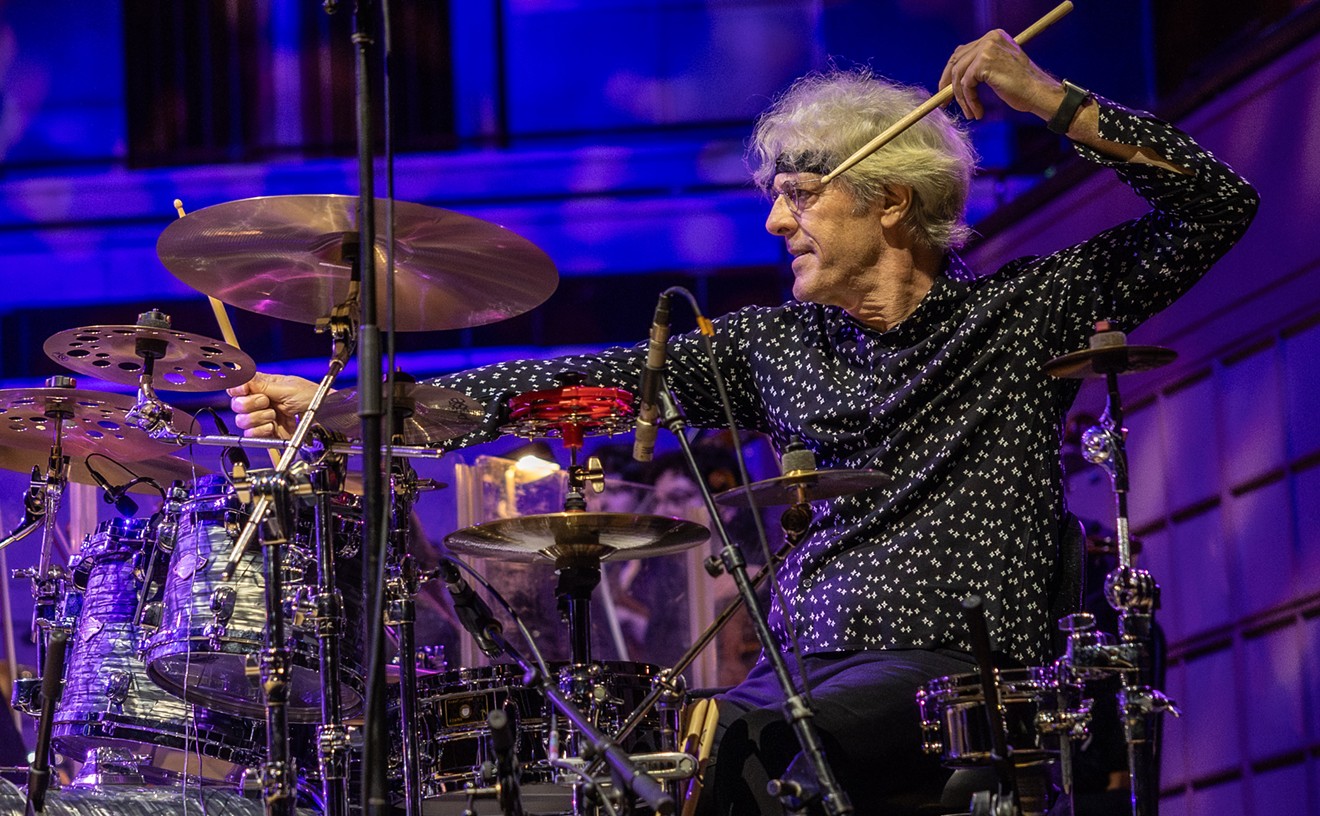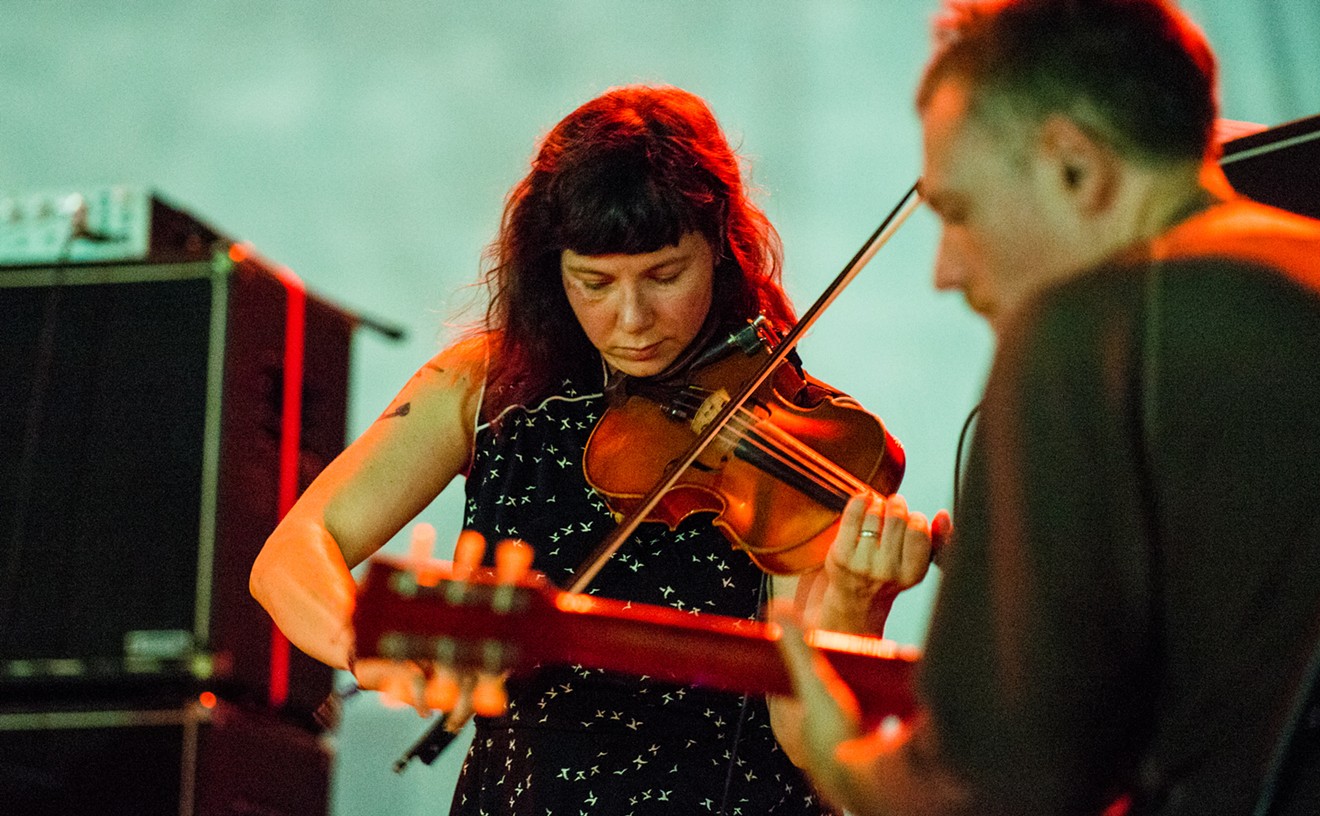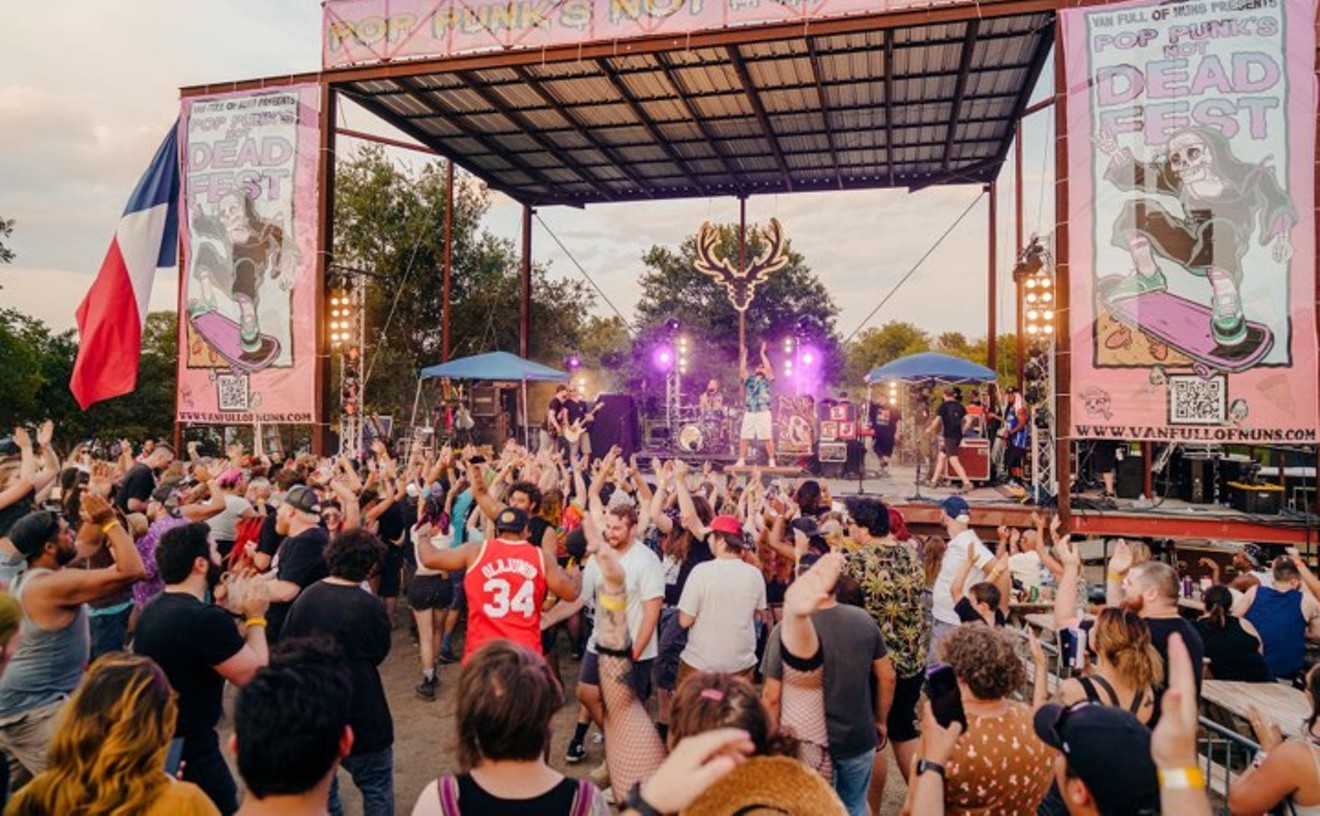In fact, not long thereafter--at the same time a little song he co-wrote with Beck called "Loser" was on its way to becoming the anthem of a generation--Stephenson was putting the finishing touches on Forest. So why is it that almost no one has ever heard his name or that of his album until recently? To put it delicately (as the media have done to an almost nauseating extent), Stephenson suffered some "mental problems" that resulted in a forced period of hospitalization. His health improved, however, to the point where Geffen Records was comfortable releasing the album last year, appropriately on its DreamWorks subsidiary.
Like many artists who are both ahead of their time and ultra-sensitive to the world around them, Stephenson experienced some difficulty functioning in "normal society." It's a condition that can be traced from Syd Barrett back through Evard Munch and past Heironymus Bosch: At some point, a person loses the distinction between art and life, reality and fiction, until it all becomes a single dream-like blur, providing the perfect opportunity to take creativity and sanity to their limits.
Forest for the Trees bears all the signs of just such a journey. Stephenson pushed his experimentation to such extremes as clipping small microphones to his ears in order to record everything he heard--in the exact way that he heard it. By so doing, he reached a plateau that few artists ever achieve: the realization that everything is art...or, in Stephenson's case, music. A realization that can, indeed, lead one to be perceived as a little nutty.
Many artists who make such a journey, however, tend to lose contact with pop rationality altogether, but Stephenson has a gift for pop that reminds you of Brian Wilson and that, thankfully, has never left him. The result is that rare connection between art and pop music that made the likes of the Velvet Underground, Tim Buckley, and Harry Nilsson both challenging and listenable.
If one were to begin a story about Stephenson's incredible musical career and his fascination with soul and hip-hop, it would likely start in--of all places--a Houston car lot. That's where he and a friend named Cliff Blodgett began working with a record label called Rap-A-Lot. Their first project was to produce for a hardcore rap group called Geto Boys, who would also become one of the determining forces in the music of the past decade.
"Cliff and I put together a studio in his attic [in Olympia, Washington], where we combined both of our efforts," says Stephenson by telephone from his home in Los Angeles. "We did a demo tape that we shopped around Houston, and a little tiny label called Rap-A-Lot records was really into it. Cliff had moved back to Houston to look for a job, so he gave me a call and told me they were interested in flying me down there 'cause they liked the demo, so I went and stayed on top of a used car lot with the Geto Boys for about four or five years."
This is one of only a handful of interviews Stephenson has ever given. His voice is somewhat shaky and nervous, filled with childlike anxiety, sincerity, and wonder, making him seem much younger than his true age of 30.
"We stayed in this really primitive living arrangement," he explains. "There was an office above the used car lot. The president of Rap-A-Lot records, James Smith, sold used cars. So me, Jim Box, Freddy Red, and Rahim stayed there, pretty much roughin' it."
That was in the late 1980s, and Stephenson, then a 19-year-old white kid, thus became one of the first instigators of gangsta rap--albeit unwillingly, he admits.
"I wasn't ever very much into hardcore," he says. "I was more into pop music, so me and some other folks I met at Rap-A-Lot moved to L.A. to try and make it in the pop-music scene, rather than the underground rap scene."
Ironically, however, as a producer Stephenson fell victim to a style of music he had just helped foster. "We kept on going up against strange barriers, like black promotions agents who wanted to hear the hardcore underground thing for some reason, so a lot of the songs we did were never actually heard by anybody. They were pop, and nobody wanted to hear pop music a few years ago.
"One of the groups I worked with was the College Boyz, and we started out working on the Scat Cat project--the animated cartoon for Paula Abdul. They liked the style so much that they signed the College Boyz to Virgin Records. But that was where I was butting my head up the against hardcore vs. pop thing. I recorded six songs for the College Boyz, and they only accepted one of them because they wanted a slow, hardcore sound. All the rest were upbeat, kinda Booker T and the MGs-style '60s soul."
Stephenson had always been a fan of music, first and foremost, particularly soul and R&B such as James Brown. Secondly, however, he was an exceptionally conscientious human being, raised in a churchgoing, environmentally aware family to which he remains very close. He says he was worried about the message that gangsta rap put out.
Later, he would even agonize over the popularity of what he saw as a negative message being received too eagerly by young people--his own "I'm a loser, baby/So why don't you kill me?"
"I didn't meet Beck until I moved back to Los Angeles," Stephenson says. "I got a job in Washington state because I wasn't making enough money to support myself, so I went back to live with my parents for a few years. Then, when I moved back [to L.A.], I got a publishing deal with BMG, and the publishing company told me about Beck. Margaret Middleman had met him as a street performer, performing on corners for, like, pocket change. So when I met him, he was really poor. He was wearing secondhand clothes and gave himself his own haircuts, so he was, like, really disheveled looking."
Appearances aside, Stephenson says he knew there was something special about Beck Hansen from practically the first moment he saw him. "Beck's very much like an elf or a troll kind of character. He's got a lot of magical energies. He has such a tongue-in-cheek sense of humor that I was kinda laughing the whole time we were working together. He's always making fun of everything to a certain extent."
The label had suggested the two get together to combine Beck's folk music with Stephenson's hip-hop and world-music influences. "I had some ideas of some grooves, and I played them for [Beck]. At that time, I had taken several sitar lessons, so I laid some sitar into a track to see what he thought of it, and he started scribbling down some ideas that he had onto a piece of notebook paper, and after a couple of hours, we roughed out an idea for 'Loser,' the first song that we ever did together. We'd just met a few hours earlier."
The two continued working together, laying down the bulk of Beck's groundbreaking 1994 album Mellow Gold in Stephenson's living room in a makeshift studio. This was also the time that Forest for the Trees was coming to life. As we all know, however, Stephenson was vastly overshadowed by his young buddy with devil's haircut, whom many now point to as the single biggest influence in alternative music today.
Unfortunately, many of the critics--and even more fans--who waved Beck's banner never bothered to read the song credits on Mellow Gold, the ones that listed Carl Stephenson's name. One can imagine Stephenson--by then sinking into a serious mental state--explaining to his fellow patients that he was the co-author of one of the biggest songs of the decade. It sounds like a sub-plot in 12 Monkeys.
But the fact that Beck received much of the credit while Stephenson's name was barely mentioned was never a source of despair, Stephenson says. "It doesn't bother me," he says, and there's nothing in his voice to suggest otherwise. "I thought it was funny. I can do without fame. I'm more into it for the music."
His own music, preferably. Not Beck's (though he says the two have worked together since and may possibly do so in the future). Not in the studio with acts like the Geto Boyz or Paula Abdul, where he says he is always subjected to people altering his vision. Where Stephenson wants to be is the tiny garden he has carved out for himself in Forest for the Trees.
It's a garden where bagpipes grow harmoniously next to sheep noises, water sprinklers, Casio keyboards, and Indian chanteuses. A place where Stephenson can sing, without even a hint of irony, "I am a painting," and you realize that, by God, he's right. A place where you sit down to reflect on such confounding subjects as "When I get up, I don't know if I'm truly awake, or if I'm still dreaming" or the still more perplexing "How now, infinite cow?"
And it's appropriate that Carl Stephenson is the keeper of such a garden, as he's following in his father's footsteps. His dad, he says, is employed as the protector of an ancient forest preserve on a Washington state Indian reservation. That gives a clue to the name Forest for the Trees, but he says there's more to it.
"For me, it's like you see every individual tree, but you're not aware that you're in a forest because you're just thinking about the immediate vicinity rather than the whole forest. I think that's what happens a lot with the music industry. They don't think about the whole forest, they just think about their individual selves more, rather than being a part of the whole, and end up cutting down too many trees or polluting the environment."
His voice is noticeably trailing off, becoming more quiet and ever less cohesive, as he is either tiring of the interview or drifting off to another level of consciousness that has little room for a journalist's inanely pragmatic questions. He seems to be almost talking to himself at times, with long pauses.
"Right now, I'm working on Forest for the Trees' second album," Stephenson says. "I'm also doing another project called the Recyclable Music Stand Band...that's all about recycling. It's gonna be a TV show if we do it right. It's for younger children, and ideally it'll be a music book, a TV show, and an album. With animated characters and things like that."
Hopefully, this time the world will be ready for it.










